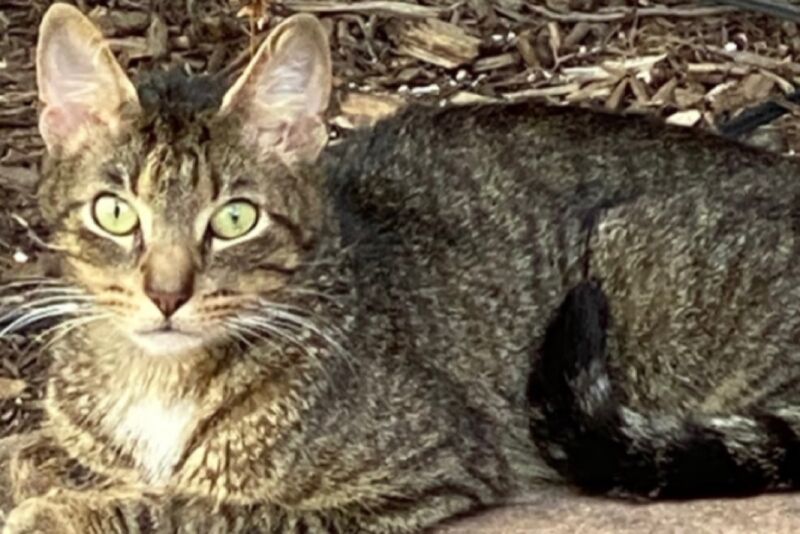There are few things more gratifying to cat lovers than a contentedly purring feline. But the precise mechanisms by which kitties produce those pleasant, low-frequency rumblings has been a matter of some debate among scientists. Now a team of Austrian scientists has determined that connective tissues embedded in cats' vocal cords play a crucial role in this ability, according to a new paper published in the journal Current Biology. The authors argue that their findings call for a reassessment of the current prevailing hypothesis about how cats purr.
Purring is mostly exclusive to cats, although certain other species can produce purr-like sounds, including raccoons, mongooses, kangaroos, badgers, rabbits, and guinea pigs. And cats are usually divided into those that purr (Felinae) and those that roar (Pantherinae); no cat species can do both. The latter category includes lions, tigers, jaguars, and leopards, and scientists have suggested that the roaring capability is due to an incompletely ossified hyoid bone in the larynx. "Purrers," by contrast, have a completely ossified hyoid, although the purring snow leopard is a rare exception.
We know the fundamental frequency at which cats purr—between 20 to 30 vibrations per second, although purrs can go up to about 150 Hz—but that is lower than expected based on vocal cord anatomy. As a general rule, larger animals have longer vocal cords and thus create lower-frequency sounds. But cats are relatively small, typically weighing on the order of a few kilograms, and their vocal cords are also relatively short. Hence the curiosity about how they produce such low-frequency purrs.
One theory, since discarded, suggested that blood surging through a large vein connected to the right side of the heart caused the purring sounds—the so-called "turbulent blood theory." More recent studies pointed to a different mechanism: cats constrict the muscles in the part of the larynx that touches the vocal cords, producing soft low-frequency rumblings as the cats inhale and exhale. Basically, the glottis opens and closes, building up and releasing pressure, resulting in purrs. It could be that a specific neural oscillator activates those laryngeal contractions, but what triggers the brain signals remains unclear.
In other words, purring is believed to be entirely reliant on neurally driven muscle contractions, i.e., the "active muscle contraction" (AMC) hypothesis. This is contrary to how most mammals produce vocal sounds via self-sustaining oscillation of the tissues in the larynx, i.e., the myoelastic-aerodynamic (MEAD) principle. And there isn't much direct empirical evidence for AMC, so the authors of this latest paper set out to test the hypothesis further.
First, the researchers excised the larynxes of eight newly deceased domestic cats, all of which had contracted terminal diseases, resulting in their euthanization. (The owners gave explicit consent for this removal.) The larynxes were promptly flash-frozen in liquid nitrogen and stored at -20° Celsius. They were slowly thawed at room temperature the night before the experiments. Each larynx was cleaned, photographed, and mounted on a vertical tube, which was used to supply heated air with 100 percent humidity to the larynx.

The larynxes were stabilized using LEGO blocks and 3D-printed plastic mounts, and mini-electrodes were attached to the thyroid cartilage, one on each side, to record the electroglottographic (EGG) signal. Gradually opening and closing a magnetic valve in the air supply chain controlled the subglottal pressure by pumping in air, which drove the oscillation in the mounted larynxes. (One larynx also underwent standard histological analysis, while another was CT scanned.)
The authors successfully produced purring sounds in all eight of the excised larynxes when air was pumped through them, with no need for muscle contractions—given that all the adjacent muscles had been removed when excising the larynxes. So what was driving the purrs? They concluded that it was the presence of connective tissue embedded in the vocal cords, which also served to lower the frequency of the purring sounds. In other words, cats rely on the same MEAD-based mechanisms to purr as other mammals do for their vocalizations.
This doesn't mean that the AMC hypothesis has been entirely debunked, per the authors, merely that it needs to be revised. It's possible that some combination of the two produces the low-frequency purrs. While further research, as always, is needed, "Our data unequivocally demonstrate that MEAD-driven vocal fold vibrations at purr frequencies are possible, without neural input of active muscle contraction," the authors concluded.
Why cats purr remains a matter of considerable debate. We associate purring with a happy, contented cat, but studies have shown that cats purr for any number of reasons. Mama cats typically purr when nursing, for example, perhaps to reassure their tiny offspring, and while in labor. This has led to the suggestion that purring might release a hormone in kitty brains to help them relax, relieve pain, or promote healing. And a cat's purr is subtly different when said feline is angling its human for food. According to a 2009 study, so-called "solicitation purrs" contain a high-frequency component that is absent from a typical purr, and human subjects consistently rated those solicitation purrs as less pleasant and more urgent. But you already knew your cat was manipulating you into those early morning feedings, right?
Current Biology, 2023. DOI: 10.1016/j.cub.2023.09.014 (About DOIs).



3175x175(CURRENT).thumb.jpg.b05acc060982b36f5891ba728e6d953c.jpg)
Recommended Comments
There are no comments to display.
Join the conversation
You can post now and register later. If you have an account, sign in now to post with your account.
Note: Your post will require moderator approval before it will be visible.